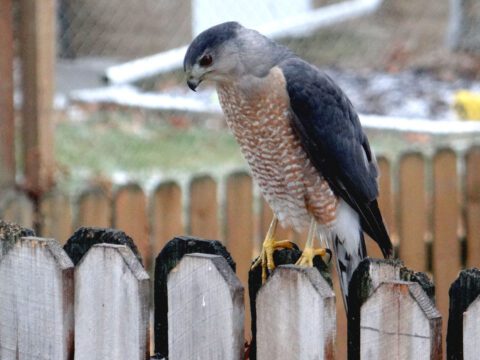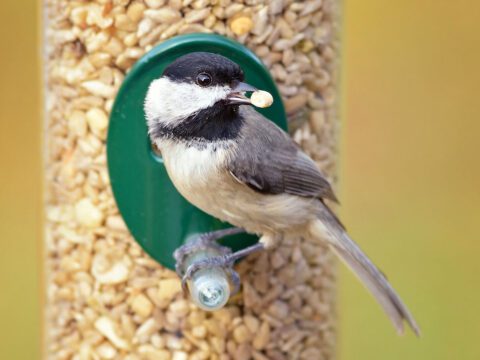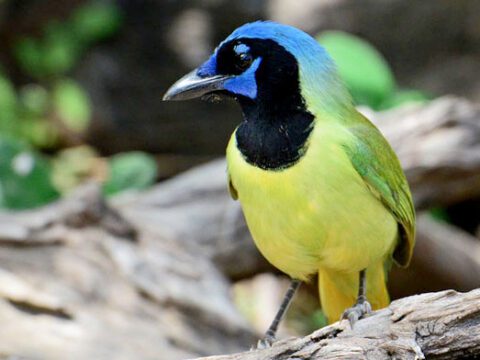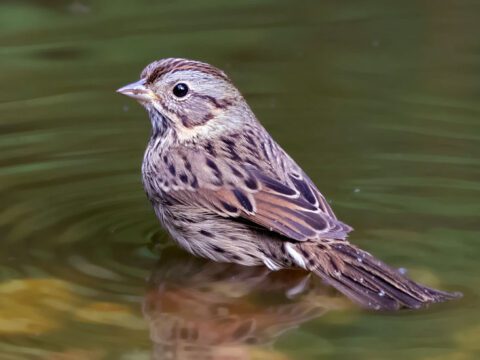Review: New Warbler Guide Practically Sings With Information, Innovation
September 5, 2013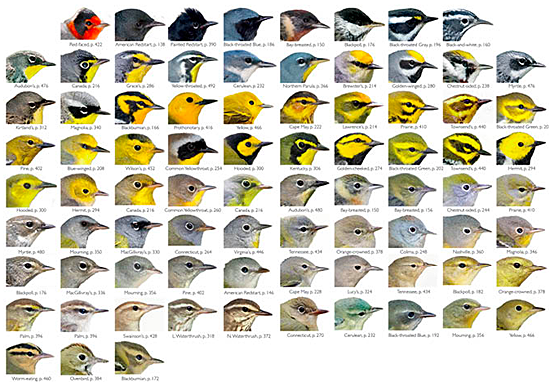
With so many excellent field guides available these days, a market is starting to open up for a new generation of specialty books. The Sibley Guide is still a great book to have along in the field, but even it shows only a handful of poses for any one species and has minimal text—concessions to its broad coverage and relatively small size. For help with things like weird plumages; details of age, sex, and molt; and bird sounds we’re increasingly able to turn to focused guides that give in-depth treatment to a smaller group of species. The Warbler Guide, new this summer from Princeton University Press, has met that challenge brilliantly and innovatively, and for one of North America’s most beloved and sought-after species groups.
The Warbler Guide, by Tom Stephenson and Scott Whittle, continues in the recent tradition of bird books that are proudly too bulky to be called a field guide. (Richard Crossley once told us that if he sees people taking his Crossley ID Guide into the field, he’ll make the next one heavier.) Instead, this new generation of books is meant for careful study. Authors have begun to take advantage of the digital revolution to include multitudes of poses and plumages, alternately set to quiz you or enlighten you.
The Warbler Guide takes this approach several steps further, and each step is clever and successful. At almost 3 pounds, it delivers on heftiness. Its 560 pages are crammed with photos—sometimes upwards of 25 images per page. But it also has drawings (by the fine artist and birder Catherine Hamilton) to highlight pattern over detail; information icons; similar species treatments; range maps; migration timing; exhaustive treatment of calls (more on that later); and full-page photos to keep the book pretty. We are talking about warblers, after all.
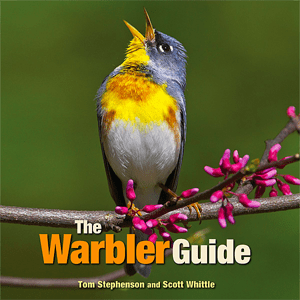
Big as it is, the book does its best not to drown in details. Under each species heading there’s a row of small, well-chosen graphics: a silhouette to convey Size & Shape, a Charley Harper-esque schematic that gives you Color Pattern, a simplified range map, plus clues on microhabitat and behavior. And then there’s my favorite innovation—a diagram of each species’ belly, undertail coverts, and tail. As in: the single most common and frustrating view you ever get of a warbler. Now you can put all those unsatisfying glimpses to work toward an ID. This might just be the innovation that makes warbler neck worth it.
Not content with a thorough treatment of the way warblers look, The Warbler Guide dives into the dark heart of warbler ID with its treatment of sound. And it’s a deep dive—bringing spectrograms (also called sonograms) back into common usage and then inventing a way to schematize, color-code, and annotate the graphs to help you understand how individual sounds fit together into a song. If you’ve ever tried to figure out the difference between “sweet sweet I’m so sweet” and “pleased to pleased to meetcha” you’ll appreciate this new approach.
Still, there’s no getting around it: learning songs from the printed page is hard. So the authors worked with our own Macaulay Library to develop an optional audio guide. This download consists of more than 1,000 recordings and costs just $5.99. Every vocalization covered by the book is here—songs, chips, and flight calls—presented in the same order as in the book, and ready for loading into the computer, smartphone, or mp3 player of your choice.
Taking a cue from the recent innovations of the Crossley guide, the new book heaps photos together to give your eye practice at picking up distinctions in size, shape, and color pattern. On some pages these are grouped systematically into Quick Finders that help you sort through the possibilities. Other pages are left as quizzes, and there’s even a page of warblers in flight for anyone wanting to step up to a real challenge.
What use is a Quick Finder if your Warbler Guide is too bulky to bring out in the field? The authors apparently wondered the same thing. So they turned each Quick Finder page into a PDF (or JPG image) that you can download for free and put on your smartphone for easy access in the field.
With digital extras such as these, the authors have partially bridged the gap between a book and an app—an inspiring example of how books can capitalize on the benefits of both physical and digital formats. It may not be practical to lug The Warbler Guide out on your next bird walk, but it’s also infuriating to try to swipe your way through a 560-page book on your phone. With this book, you can dog-ear the pages at home and then take the Quick Finder plates and bird calls outside.
Does this guide do anything poorly? Birders are picky people, so you may find some things imperfect. It took me a while to understand a few unfortunate acronyms—such as UnTC, which is used throughout the book for “undertail coverts” (to be fair, the authors do apologize in advance). The book intersperses tutorials, species accounts, visuals, sound treatments, and quick finders throughout, making it hard to get the hang of where you are as you page through. (Given the navigational challenges in the book, their unorthodox decision to arrange species alphabetically by common name is wise once you get used to it.) The species accounts are luxuriously long (6–10 pages per species!), but the page headers within them could be more helpful, With each species’ sounds section sandwiched in between two photo-heavy sections, I had trouble figuring out where each account started.
But these are symptoms of the overall guiding principle of the book, which is to ladle detail onto every page until it is heavy with information. If that makes it hard to page through the book, consider it an invitation to sit down and spend time absorbing the hard-won knowledge on each page. Because there is a wealth of it here: field experience, museum research, observation, inference, all presented with remarkable creativity. (You’ll enjoy thumbing past the mnemonics the authors have invented for each species, some of which attain a haiku-like clarity.) At a combined price of $36 (for the book plus audio downloads) this detail-heavy tome is one of the great bargains in bird books today.

All About Birds
is a free resource
Available for everyone,
funded by donors like you
American Kestrel by Blair Dudeck / Macaulay Library

